A child looks up with curiosity and compassion at an unexpected guest, whilst sadness towers above, encompassing and extending beyond the boundaries of the book cover.
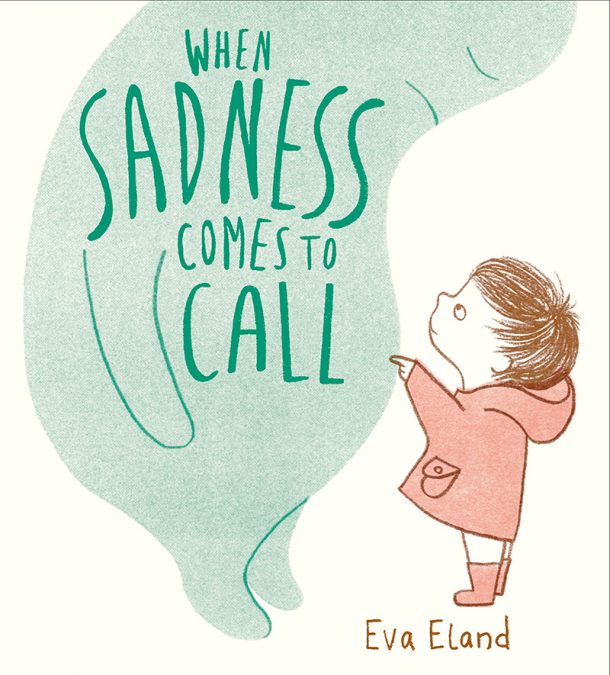
Eva Eland’s poignant debut picture book When Sadness Comes to Call shines a light on the difficult, yet universally felt emotion of sadness. Awarded Book Cover Design Award 2020, our judges felt that was this an important subject to explore with young readers and admired Eva’s soft, non-threatening characterisation of sadness.
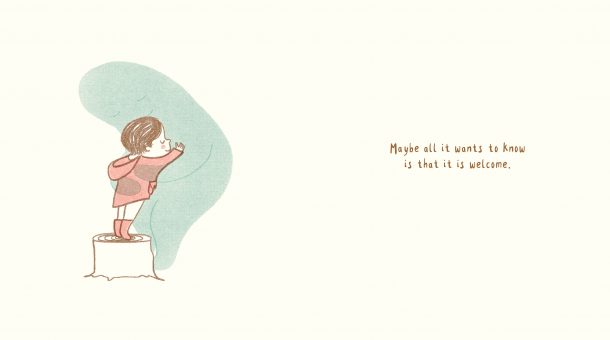
To create her illustrations, Eva used pencil drawing, creative software and risography to mimic the process of printmaking, with each block of colour applied separately. The physical presence of Sadness is enhanced on the book’s cover design through the use of textured paper and debossed details.
When Sadness Comes to Call was also announced as the Klaus Flugge Prize 2020 Winner and described by the judges as a ‘masterpiece of minimalism’.
As Blue Monday approaches, we were keen to find out more about Eva’s prizewinning treatment of sadness and to discover what she did next…
Congratulations on winning both the V&A Book Cover Design Award 2020 and the Klaus Flugge Prize 2020! How does it feel to have won these awards for your debut picture book?
Thank you! It still feels unreal to be honest, like it happened to another person. This has been quite an eventful year for me, as I’ve relocated to the Netherlands with my husband whilst pregnant after having lived in Cambridge for almost four years, and I became a mother shortly after winning the V&A Award, all whilst the world was upside down because of COVID. Making When Sadness Comes to Call already feels like a long time ago – and receiving such incredible recognition for it from these two very important awards, is mind-blowing. Especially since I remember the feeling of being out of my depth, working on my first picture book, and not ready at all.
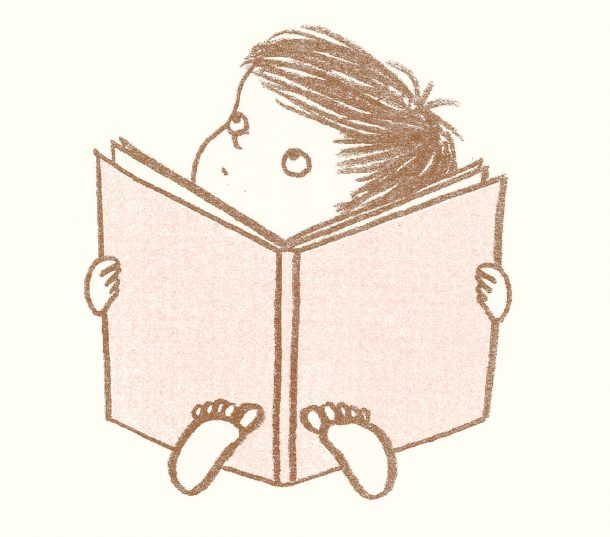
When Sadness Comes to Call is an uplifting look at the universally felt emotion of sadness and aims to help children understand this difficult feeling. Can you tell us more about the project and how it came about?
There are always many ways to answer this question as the process of making the book is almost like a tapestry, woven from many different threads. One of these threads originates in my own childhood, where I often felt bouts of sadness without, to me in that moment, any apparent reasons. I didn’t really know how to express these undefined and often unwanted feelings or how to deal with them, and have often even felt shame or guilt for feeling sad, as if, without any good reason, I wasn’t allowed to feel like this.
I also remember the confusion of perceiving other peoples feelings but receiving contradicting messages when those people tried to hide it or left the feelings unnamed. This book is also aimed at the adult that sits down with a child.
Give sadness (and any other difficult feeling) a name and don’t try to hide it. Children are often very perceptive and will pick up on it one way or the other.
It’s not necessarily easy to identify emotions as often there are other emotions and narratives we tell ourselves that are interconnected – so hopefully this book gives some children the opportunity to start practicing at an early age already and maybe it can even show them that we don’t always need to fear these so-called difficult emotions so much. They can be our friends, as they are often there to signal something important to us or help us to look after ourselves and our needs better.
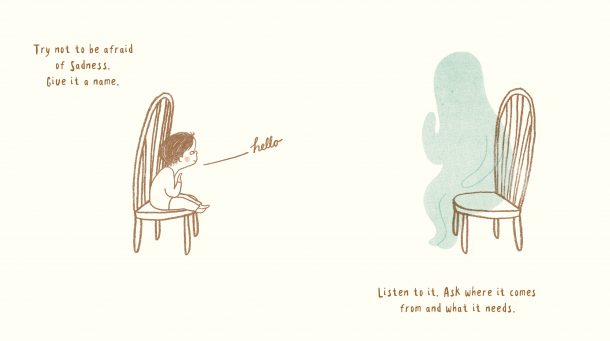
How did you create the illustrations for the book? Did you receive support and advice from Andersen Press?
I started working on this book during my Masters in Children’s Book Illustration at the Cambridge School of Art where I discussed the work with tutors and colleagues and even friends and family – particularly about how they experienced sadness in their lives and discussing my ideas and different ways of depicting sadness. The story and the look and feel of the book – illustrations made with small pencil drawings enlarged in Photoshop, combined with some textures and afterwards printed with risography in separate colour layers – were there already when my publisher Andersen Press offered to publish the book. Together with my editor Libby Hamilton and art director Rebecca Garrill we worked really hard on developing the book further.
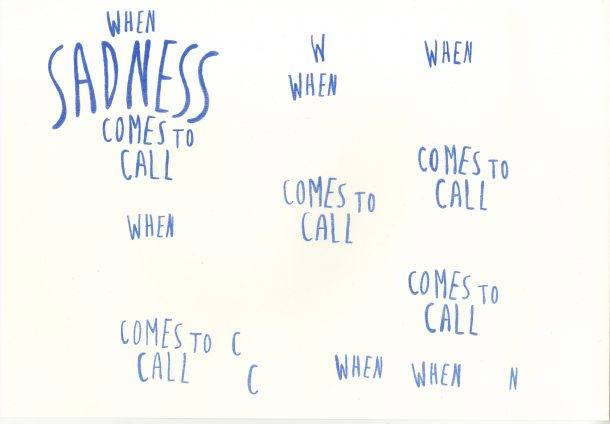
I remember how it felt very collaborative and how it elevated my work to another level.
Their feedback, and our discussions back and forth about the text and meaning, and the illustrations, have fine-tuned my work in a way I couldn’t have managed on my own. It was also a joy to work on the cover together with my art director, she deserves a lot of credit for the overall design and look as well. The finishing details, like the textured paper for the cover of the book and the embossed lettering and details of Sadness, give it even more of a ‘presence’, like it could be your friend. I’ve always loved books as tactile objects too, so I was very pleased with how it all came together in the end.
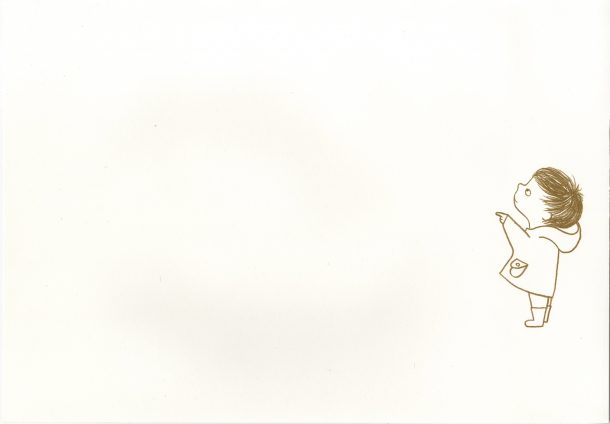
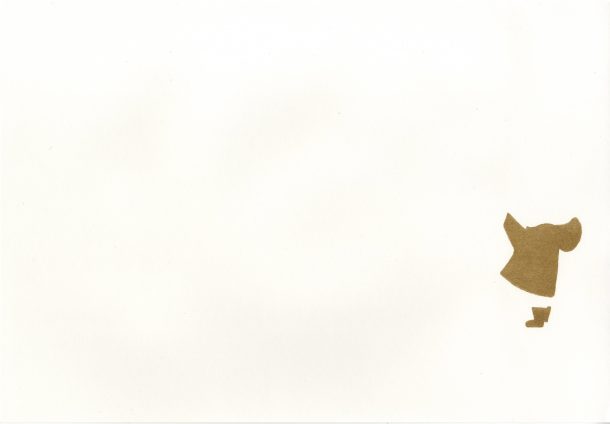
What or who inspired you to become an illustrator?
“I’ve always loved books. I devoured them.”
I would save up my pocket money to buy the next book in the series of Little House on the Prairie by Laura Ingalls Wilder, and I would always loan the maximum amount of books at the library. I’d hide under my blanket in the evening with a torch so I could secretly read past bedtime. I’d read them under the table in class, sometimes being called several times before I heard my teacher, so immersed was I in the worlds and stories that they contained.
My love for books has never disappeared, and even though it took me a while to realise I could be a professional illustrator and draw for a living, I’ve always kept drawing and writing. I did as a child, as a teenager and at the art academy, even when I was actually studying film later on. There have been periods in my life where I got sidetracked by other things, like jobs to pay the bills, but I always kept returning to writing and drawing, and books. When I finally allowed myself to dream again, I took the leap and went on to study children’s book illustration in Cambridge – it opened up a whole new world for me. By drawing from observation, I have learned to look better. And during the sequential image module at the MA, there was a point where I just couldn’t stop my brain from generating ideas – everything around me suddenly became a possibility to explore in a picture book. The ideas would keep me awake at night and I’d wake up with them in the morning, all of them insisting I’d bring them alive and create a book for them to live in. I had to ‘tell’ them I wasn’t going to get up for them anymore in the night, they just had to return at a more opportune time. Perhaps my life became a bit duller after that and my sketchbooks emptier – but at least I got to sleep more!
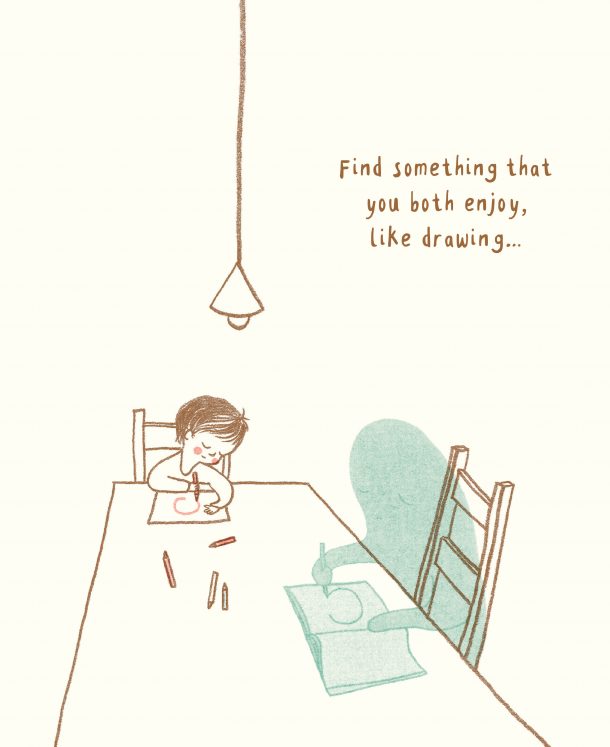
What projects have you been working on since the publication of When Sadness Comes to Call?
I finished When Sadness Comes to Call when I was still studying children’s book illustration, so after I finished it, I worked on several other ideas and my presentation for the graduation. One of those ideas I’m actually working on now with my publisher Andersen Press, and it will be my third picture book.
My second picture book is Where Happiness Begins, a follow up for When Sadness Comes to Call. I started working on it after I graduated in 2018 and it was published earlier this year and will come out as a paperback in February 2021. It took me quite a while before I knew what it was that I could say about this rather big topic, in only 12 spreads – but I’ve managed in the end, with a lot of help from my editor Sue Buswell and art director Rebecca Garrill – and the people around me, who were willing to engage in philosophical discussions about life and happiness.
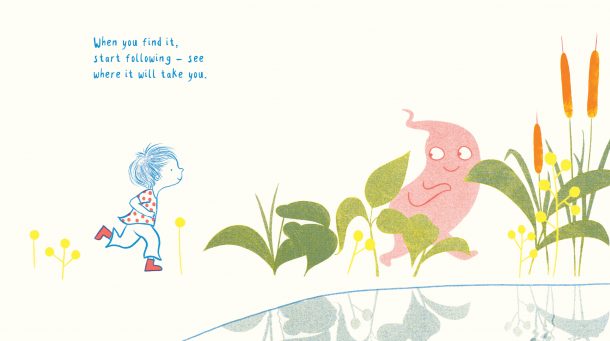
What advice would you give to new and emerging illustrators interested in pursuing their own career in picture book illustration?
I’ve mentioned before how important observational drawing is for me, something which is also given a great deal of attention in the MA Children’s Book Illustration course. Not only will it make you a better draughtsman in general, it will also let you discover narratives around you, sometimes hidden in small details that you might have overlooked otherwise. A gesture or posture from someone, might not only make your character more real, but can also carry a big part of a story.
The other advice I’d give is to keep going and to follow your own curiosity and passion.
It might not be easy to get a book published or to sustain yourself working as an illustrator, so it helps if you find out what makes you tick and what draws you in, no matter what. If it wasn’t for this curiosity and need to explore and understand things better – I don’t think I would’ve had the stamina to keep pushing myself to do this work and to deal with all the uncertainties that come with being self-employed in a very competitive industry.
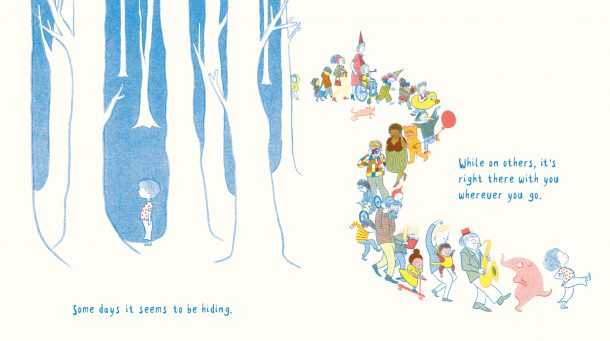
I’m very grateful for all the opportunities I’ve been given (and for my past self that showed up and used those opportunities).
I never expected or dreamt of such an overwhelming positive response to my book – not only the reviews and prizes it has won, but also that so many people found comfort and reassurance in this book.
It gives me a warm feeling to read messages from so many readers, saying how important the book is for them or their children. You can’t really plan for these things though – so your best shot, I think, is to tell your own stories, the ones you care about most, as you’ll be more likely to strike a chord with others that way. Rather than follow a trend or an idea of what a picture book ought to be. I know it sounds very corny and might be a cliche, but discovering who you are and what stories you have to tell by following your curiosity, seems to be the best and perhaps also most difficult thing to do.
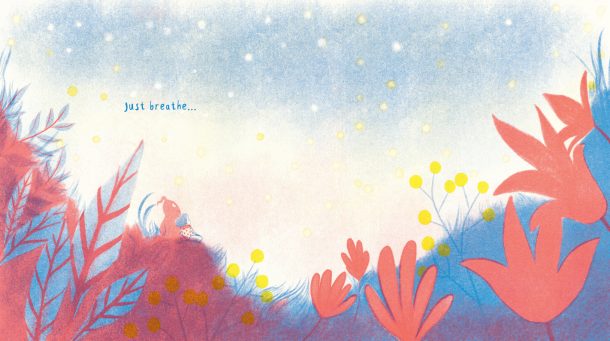
Discover more of Eva Eland’s illustrations on her website at evaeland.com or on instagram @evaeland.
Schools can find Teaching Notes on When Sadness Comes to Call on the Andersen Press website here. Follow the publisher @andersenpress
The 2020 published categories judges were:
Bonnie Greer, playwright, novelist, critic and broadcaster
Ren Renwick, CEO of Association of Illustrators (AOI)
Dr Tristram Hunt, Director of the V&A
Unfortunately, due to the COVID-19 pandemic, we are not running the 2021 competition. The V&A Illustration Awards 2022 will open to entries later this year. More information about the Awards and a gallery of entries can be found on our website at www.vam.ac.uk/illustrationawards.


